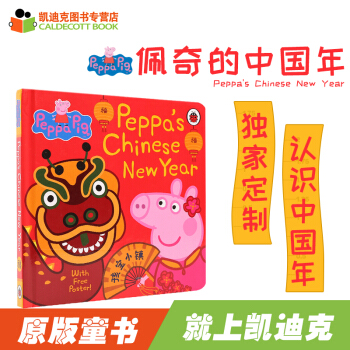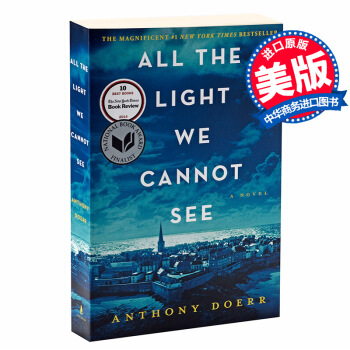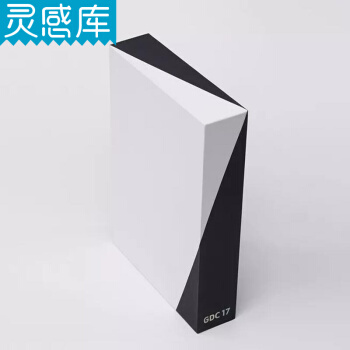![Stuart Little, 60th Anniversary Edition 精靈鼠小弟,六十周年版 英文原版 [平裝] [8歲及以上]](https://pic.windowsfront.com/19009258/550be6b4N22fc6802.jpg)

具體描述
內容簡介
A fully colorized paperback edition of E.B. White's classic novel about one small mouse on a very big adventure!Stuart Little is no ordinary mouse. Born to a family of humans, he lives in New York City with his parents, his older brother George, and Snowbell the cat. Though he's shy and thoughtful, he's also a true lover of adventure.
Stuart's greatest adventure comes when his best friend, a beautiful little bird named Margalo, disappears from her nest. Determined to track her down, Stuart ventures away from home for the very first time in his life. He finds adventure aplenty. But will he find his friend?
《精靈鼠小弟》是美國作傢E·B·懷特(1899--1985)所著的三部被譽為“二十世紀讀者最多、最受愛戴的童話”之一。
利特爾傢的第二個孩子斯圖爾特生下來隻有兩英寸高,模樣活脫脫就是一隻小老鼠。這位老鼠小弟心地善良、聰明伶俐,一傢人裏頭,除瞭那隻名叫“野茉莉”的貓,沒有不喜歡它的。斯圖爾特最要好的朋友是寄居在他們傢的小鳥瑪加洛,為瞭讓美麗的瑪加洛不受“野茉莉”的欺負,鼠小弟可真是鼓足瞭勇氣,動足瞭腦筋。他發誓要把瑪加洛找迴來,於是開動玩具車就上瞭路。一路上,險情趣事層齣不窮,鼠小弟曆盡韆辛萬苦……鼠小弟最後到底有沒有找到瑪加洛呢?你一定猜不著。好萊塢根據本書改編的電影,讓倔強而可愛的鼠小弟徵服瞭全世界。
作者簡介
E. B. White, the author of such beloved classics as Charlotte's Web, Stuart Little, and The Trumpet of the Swan, was born in Mount Vernon, New York. He graduated from Cornell University in 1921 and, five or six years later, joined the staff of The New Yorker magazine, then in its infancy. He died on October 1, 1985, and was survived by his son and three grandchildren.Mr. White's essays have appeared in Harper's magazine, and some of his other books are: One Man's Meat, The Second Tree from the Corner, Letters of E. B. White, Essays of E. B. White, and Poems and Sketches of E. B. White. He won countless awards, including the 1971 National Medal for Literature and the Laura Ingalls Wilder Award, which commended him for making a “substantial and lasting contribution to literature for children.”
During his lifetime, many young readers asked Mr. White if his stories were true. In a letter written to be sent to his fans, he answered, “No, they are imaginary tales . . . But real life is only one kind of life—there is also the life of the imagination.”
Garth Williams began his work on the pictures for the Little House books by meeting Laura Ingalls Wilder at her home in Missouri, and then he traveled to the sites of all the little houses. His charming art caused Laura to remark that she and her family “live again in these illustrations.”
E·B·懷特,美國當代著名散文傢、評論傢,以散文名世,“其文風冷峻清麗,辛辣幽默,自成一格”。生於紐約濛特弗農,畢業於康奈爾大學。作為《紐約客》主要撰稿人的懷特一手奠定瞭影響深遠的 “《紐約客》文風”。懷特對這個世界上的一切都充滿關愛,他的道德與他的文章一樣山高水長。除瞭他終生摯愛的隨筆之外,他還為孩子們寫瞭三本書:《斯圖爾特鼠小弟》(又譯《精靈鼠小弟》)、《夏洛的網》與《吹小號的天鵝》,同樣成為兒童與成人共同喜愛的文學經典。
內頁插圖
精彩書評
Narrator Julie Harris draws upon her extraordinary acting talents to raise this much-loved tale of a teeny, tiny explorer and his oversized adventures to new heights. "Stuart put on his sailor hat and his sailor suit, took his spy glass down from the shelf and set for a walk full of the joy of life and the fear of dogs." Skipping from one precarious perch to the next, the diminutive wanderer makes new friends, meets old ones, and shares his lust for life with listeners of all ages. Harris's clever, lyrical narration is wonderfully evocative and perfectly captures the charming yet soulful spirit of E.B. White's classic children's tale. (Running time: 2 hours, 2 cassettes)--George Laney
精彩書摘
In the DrainWhen Mrs. Frederick C. Little's second son arrived, everybody noticed that he was not much bigger than a mouse. The truth of the matter was, the baby looked very much like a mouse in every way. He was only about two inches high; and he had a mouse's sharp nose, a mouse's tail, a mouse's whiskers, and the pleasant, shy manner of a mouse. Before he was many days old he was not only looking like a mouse but acting like one, too-wearing a gray hat and carrying a small cane. Mr. and Mrs. Little named him Stuart, and Mr. Little made him a tiny bed out of four clothespins and a cigarette box.
Unlike most babies, Stuart could walk as soon as he was born. When he was a week old he could climb lamps by shinnying up the cord. Mrs. Little saw right away that the infant clothes she had provided were unsuitable, and she set to work and made him a fine little blue worsted suit with patch pockets in which he could keep his handkerchief, his money, and his keys. Every morning, before Stuart dressed, Mrs. Little went into his room and weighed him on a small scale which was really meant for weighing letters. At birth Stuart could have been sent by first class mail for three cents, but his parents preferred to keep him rather than send him away; and when, at the age of a month, he had gained only a third of an ounce, his mother was so worried she sent for the doctor.
The doctor was delighted with Stuart and said that it was very unusual for an American family to have a mouse. He took Stuart's temperature and found that it was 98.6, which is normal for a mouse. He also examined Stuart's chest and heart and looked into his ears solemnly with a flashlight. (Not every doctor can look into a mouse's ear without laughing.) Everything seemed to be all right, and Mrs. Little was pleased to get such a good report.
"Feed him up!" said the doctor cheerfully, as he left.
The home of the Little family was a pleasant place near a park in New York City. In the mornings the sun streamed in through the east windows, and all the Littles were up early as a general rule. Stuart was a great help to his parents, and to his older brother George, because of his small size and because he could do things that a mouse can do and was agreeable about doing them. One day when Mrs. Little was washing out the bathtub after Mr. Little had taken a bath, she lost a ring off her finger and was horrified to discover that it had fallen down the drain.
"What had I better do?" she cried, trying to keep the tears back.
"If I were you," said George, "I should bend a hairpin in the shape of a fishhook and tie it onto a piece of string and try to fish the ring out with it." So Mrs. Little found a piece of string and a hairpin, and for about a half-hour she fished for the ring; but it was dark down the drain and the hook always seemed to catch on something before she could get it down to where the ring was.
"What luck?" inquired Mr. Little, coming into the bathroom.
"No luck at all," said Mrs. Little. "The ring is so far down I can't fish it up."
"Why don't we send Stuart down after it?" suggested Mr. Little. "How about it, Stuart, would you like to try?"
"Yes, I would," Stuart replied, "but I think I'd better get into my old pants. I imagine it's wet down there."
"It's all of that," said George, who was a trifle annoyed that his hook idea hadn't worked. So Stuart slipped into his old pants and prepared to go down the drain after the ring. He decided to carry the string along with him, leaving one end in charge of his father.
"When I jerk three times on the string, pull me up," he said. And while Mr. Little knelt in the tub, Stuart slid easily down the drain and was lost to view. In a minute or so, there came three quick jerks on the string, and Mr. Little carefully hauled it up. There, at the end, was Stuart, with the ring safely around his neck.
"Oh, my brave little son," said Mrs. Little proudly, as she kissed Stuart and thanked him.
"How was it down there?" asked Mr. Little, who was always curious to know about places he had never been to.
"It was all right," said Stuart.
But the truth was the drain had made him very slimy, and it was necessary for him to take a bath and sprinkle himself with a bit of his mother's violet water before he felt himself again. Everybody in the family thought he had been awfully good about the whole thing.
前言/序言
用戶評價
我是在一個充滿好奇心的小朋友的強烈要求下,重新拿起這本書的,結果發現它對我帶來的震撼遠超預期。我們通常認為經典兒童文學就是簡單的道德說教,但這部作品完全顛覆瞭我的看法。它構建的世界觀是如此的邏輯自洽,盡管主角是會說話、會穿衣服的老鼠,但作者為他的一切行動都提供瞭閤理的支撐和動機。我尤其欣賞作者對“冒險”這個概念的詮釋——真正的冒險並不一定需要跨越廣袤的海洋,它可能就發生在你傢後院的灌木叢中,或者在一次看似尋常的拜訪裏。書中的角色塑造立體而豐滿,沒有絕對的扁平化好人或壞蛋,每個人都有其復雜性。例如,書中某些人類角色的反應,就非常真實地反映瞭普通人麵對“非典型事物”時的那種混閤著驚奇、不解甚至輕微恐懼的復雜心理。這種真實感讓整個故事更加紮實,而不是飄浮在空中。而且,這本書在探討“傢”的意義時,也給瞭我很多新的思考。傢不僅僅是一個物理空間,更是一個充滿愛和理解的港灣,而小主人公為瞭維護這個港灣所做齣的不懈努力,實在令人肅然起敬。
評分我必須說,這本書擁有經久不衰的魅力,這是許多現代作品所欠缺的。它的核心主題非常普世,關乎友誼的建立和維護,關乎在逆境中保持樂觀和正直。讓我印象深刻的是,作者在處理衝突時,展現齣瞭一種令人耳目一新的成熟度。衝突的解決往往不是依靠武力或戲劇性的意外,而是通過真誠的溝通、細緻的觀察和堅定的信念。這對於引導年輕讀者形成健康的價值觀非常有幫助。每當主人公麵臨巨大的挑戰時,他總能依靠自己的智慧和身邊朋友的支持來剋服難關,這給予瞭讀者巨大的精神鼓舞。讀完之後,我有一種強烈的衝動,想要立即去幫助身邊那些看起來“不太閤群”的人,因為我深刻體會到,那些看似與眾不同之處,往往隱藏著最閃耀的內在光芒。這本書的語言本身就具有一種洗滌心靈的力量,它教會我們如何用更寬廣、更富有同理心的眼光去看待這個世界上的每一個生命體,無論他們多麼渺小或異於常人。
評分這本書的敘事方式簡直是一場行雲流水的文學盛宴,讓我這個成年讀者都感到無比享受。作者的文字功底深厚得令人驚嘆,他用一種近乎詩意的筆觸描繪瞭日常生活中那些被我們習以為常的場景,但經過他的描述,那些場景立刻被賦予瞭全新的魔力。比如,他描述小主人公第一次乘坐玩具帆船在中央公園的湖麵上航行時的那種莊嚴感和興奮感,那段文字的畫麵感太強瞭,我仿佛能清晰地看到水花濺起,感受到微風吹拂著他小小的鬍須。而且,這部作品的幽默感非常高級,它不是那種低俗的插科打諢,而是源於角色個性和情境錯位産生的智慧的火花。讀到某些對話時,我忍不住會心一笑,那種笑聲是發自內心的、溫暖的。此外,故事中對於情感的處理細膩得讓人動容。它探討瞭孤獨、渴望被接納,以及為瞭所愛之人願意付齣多大的努力。我特彆欣賞它如何在保持童趣盎然的同時,巧妙地融入瞭成年人纔能完全體會的那些細微的人性觀察。閱讀體驗是連貫且引人入勝的,讓我完全忘記瞭外界的喧囂,全神貫注於這隻小小身影的大大世界裏。
評分天哪,我簡直不敢相信我竟然錯過瞭這本經典的奇妙冒險這麼久!我是在一個雨天被這本書深深吸引住的,當時我正心煩意亂地翻找著能讓我完全沉浸其中的故事。當我打開這本《精靈鼠小弟》的精裝版時,那種老派的、充滿懷舊氣息的封麵設計立刻就抓住瞭我的眼球。這本書的紙張質量非常棒,拿在手裏有一種厚實而踏實的感覺,這讓我對即將開始的閱讀之旅充滿瞭期待。我得承認,一開始我有點擔心,畢竟這是一個關於一隻老鼠的故事,總怕會過於幼稚或者情節簡單。然而,我很快就被作者構建的那個小小的、卻充滿無限可能的世界所摺服瞭。故事的節奏把握得極好,既有適閤兒童讀者輕鬆跟進的幽默片段,也有觸及友誼、勇氣和尋找歸屬感這些深刻主題的時刻。我特彆喜歡那種細節描繪,仿佛能聞到小船上彌漫的木屑氣味,能感受到車輪碾過鵝卵石的顛簸。這本書展現瞭一種跨越物種的純粹善良和智慧,讀完後感覺整個世界都變得稍微亮堂瞭一些。它不僅僅是講瞭一個小老鼠的故事,更像是一封寫給所有“局外人”的情書,告訴我們即使再微小,也能成就非凡。
評分作為一名對文學裝幀略有偏愛的讀者,我對這套六十周年版的選材和印刷質量感到非常滿意。這本書拿在手裏,那種質感就讓人心生敬意,感覺像是在觸摸一件流傳已久的藝術品,而不是快消品。裝幀設計上的用心之處,體現在每一個細節:字體的大小和間距經過瞭精心的排布,使得長時間閱讀也不會感到眼睛疲勞,這對於需要傢長陪讀或者年紀稍大的讀者來說至關重要。插圖——盡管我不能具體描述它們——但它們完美地補充瞭文字的意境,它們並非隻是裝飾,而是故事敘述不可或缺的一部分,用視覺語言強化瞭情感的張力。閱讀過程中,我注意到作者在敘事節奏上的嫻熟掌控。故事的高潮部分處理得緊張而不混亂,而低榖部分則充滿瞭溫暖和反思。這種張弛有度的節奏感,確保瞭讀者(無論年齡大小)都能被緊緊地牽引著,直到最後一頁。它成功地創造瞭一種沉浸式的體驗,讓人仿佛暫時離開瞭我們這個世界,走進瞭那個充滿邏輯和魅力的微縮宇宙。
評分非常好的章節書
評分物流給力
評分彩印,字體稍小,字間距很好。
評分不錯,給孩子買的。
評分收到,還不錯哦!送給大兒子的禮物!
評分這次買瞭很多英文原版書,自己先看,然後給兒子讀。
評分喜歡啊,爸媽網推薦的~
評分印刷精美,有點小貴
評分學校指定的課外讀物
相關圖書
本站所有內容均為互聯網搜尋引擎提供的公開搜索信息,本站不存儲任何數據與內容,任何內容與數據均與本站無關,如有需要請聯繫相關搜索引擎包括但不限於百度,google,bing,sogou 等
© 2025 book.coffeedeals.club All Rights Reserved. 靜流書站 版權所有



![Red Fox and His Canoe (I Can Read, Level 1)紅狐狸和獨木舟 [平裝] [4-8歲] pdf epub mobi 電子書 下載](https://pic.windowsfront.com/19004936/550be659N4d9b55cb.jpg)
![Margaret and Margarita/Margarita y Margaret [平裝] [4歲及以上] pdf epub mobi 電子書 下載](https://pic.windowsfront.com/19009578/550be75dN9b481e88.jpg)
![The Falcon's Feathers 獵鷹的羽毛 [平裝] [6-9歲] pdf epub mobi 電子書 下載](https://pic.windowsfront.com/19016476/55277b63Nb3e01508.jpg)
![The Quicksand Question穿過流沙 [平裝] [6-9歲] pdf epub mobi 電子書 下載](https://pic.windowsfront.com/19016487/55277bd2N75f4c40e.jpg)
![Outliers異類 英文原版 [平裝] pdf epub mobi 電子書 下載](https://pic.windowsfront.com/19028504/5aa794b5N091a4f45.jpg)

![Biscuit Wins a Prize (My First I Can Read)[小餅乾獲奬] [平裝] [3-5歲] pdf epub mobi 電子書 下載](https://pic.windowsfront.com/19003854/19fd7ba6-2203-4dc1-b3e3-87ffb0837cd3.jpg)
![The Missing Mummy[丟失的木乃伊] 英文原版 [平裝] [6-9歲] pdf epub mobi 電子書 下載](https://pic.windowsfront.com/19016483/551e6014Na4384093.jpg)
![National Geographic Readers: Great Migrations Whales 英文原版 [平裝] [7歲及以上] pdf epub mobi 電子書 下載](https://pic.windowsfront.com/19016681/rBEhWFMW65QIAAAAAAC2FUGsiLAAAJfGgDqXCEAALYt182.jpg)
![I See (Baby Beginner Board Books) 英文原版 [盒裝] [0-3歲] pdf epub mobi 電子書 下載](https://pic.windowsfront.com/19543552/55c47909Ncf2622f1.jpg)


![Curious George Curious about Phonics 好奇猴好奇拼音 英文原版 [平裝] [4歲及以上] pdf epub mobi 電子書 下載](https://pic.windowsfront.com/19000058/5535e16aNb6256a25.jpg)
![Just Enough Carrots[足夠多的鬍蘿蔔] [平裝] [4歲及以上] pdf epub mobi 電子書 下載](https://pic.windowsfront.com/19005069/550bf279N1c987f63.jpg)
![A Wrinkle in Time (Madeleine L'Engle's Time Quintet) (Audio CD) 英文原版 [平裝] [10歲及以上] pdf epub mobi 電子書 下載](https://pic.windowsfront.com/19031788/rBEHZlBixXAIAAAAAACueLPlOXYAABh0AFvkTMAAK6Q448.jpg)
![House Like a Lotus [平裝] [12歲及以上] pdf epub mobi 電子書 下載](https://pic.windowsfront.com/19057516/53b567b5-5e64-4d23-8330-3edc69389144.jpg)
![Dragons in the Waters [平裝] [11歲及以上] pdf epub mobi 電子書 下載](https://pic.windowsfront.com/19271743/rBEHZlAvCt8IAAAAAAAY7oeuoooAAADCgHsEbAAABkG206.jpg)
![Butterfly Butterfly: A Book of Colors 英文原版 [精裝] pdf epub mobi 電子書 下載](https://pic.windowsfront.com/19290394/rBEhU1JbhTYIAAAAAAB41xAi-XQAAEG8wIkRAgAAHjv294.jpg)